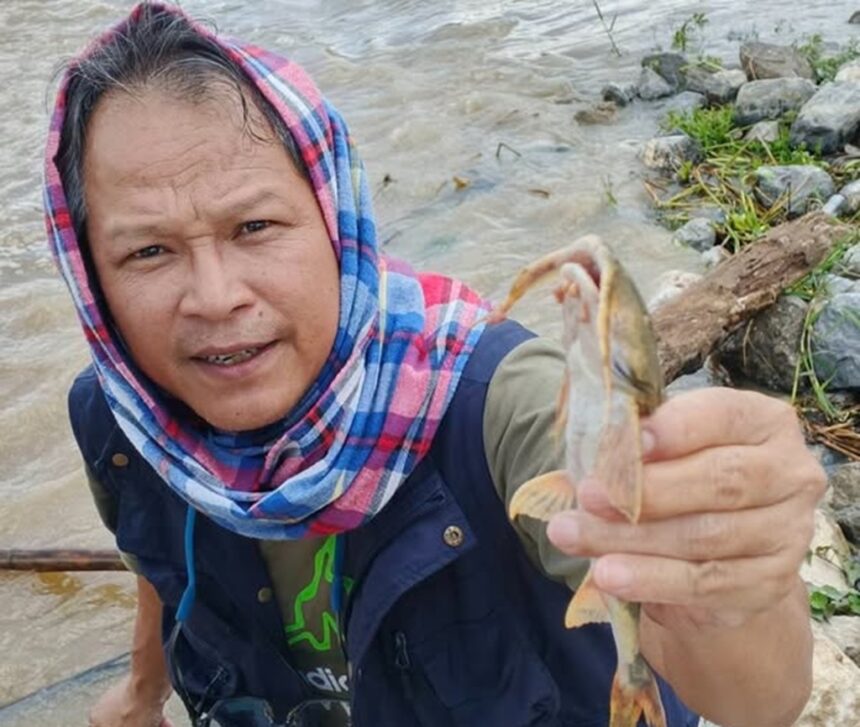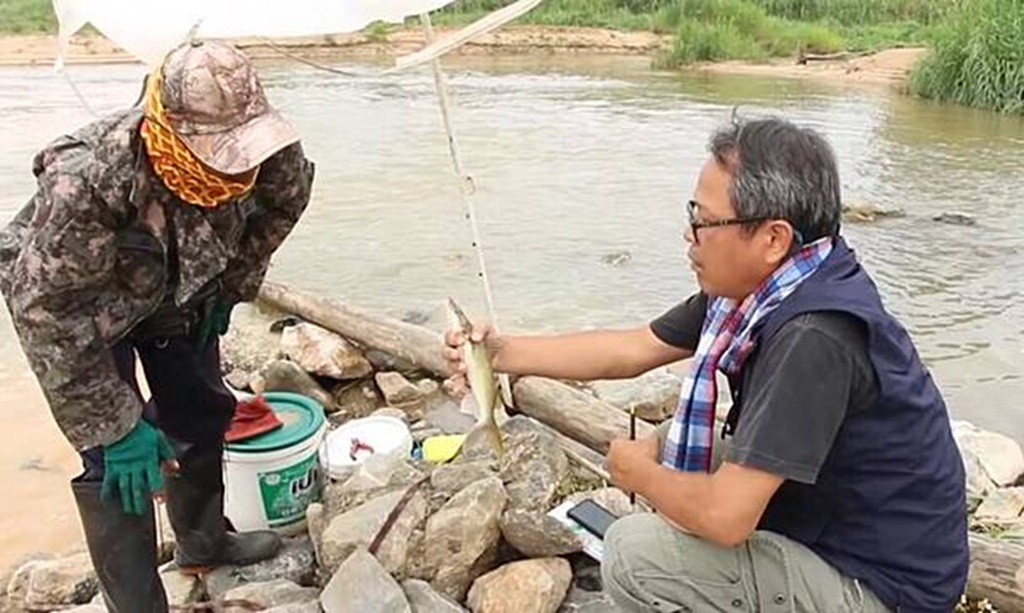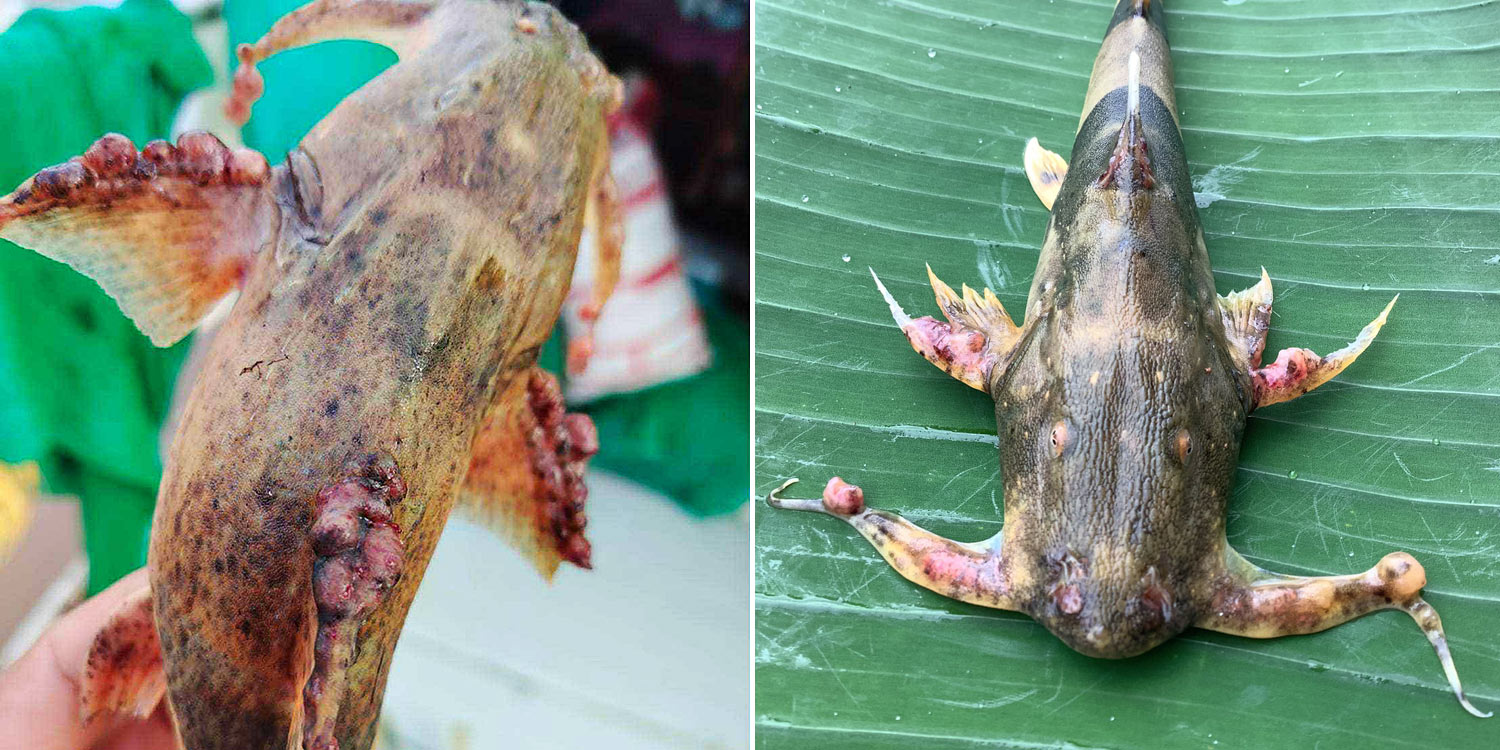CHIANG RAI – Recent reports from the Golden Triangle highlight a growing concern about fish health in the Mekong River. Fishers and local groups have found fish with clear red lumps and sores.
This has happened since gold and rare earth mining began upstream, especially near the headwaters of the Kok and Sai rivers. The problem appears linked to increased arsenic and heavy metal contamination in these waterways, which then flow into the Mekong.
Local fisheries officials stress that fish must be thoroughly cooked before eating.
Niwan Roi-kaew, leader of the Rak Chiang Khong conservation group, collected samples along the Thai-Lao border. He reported that catfish and other local fish now show infections and visible sores, something he says never happened before late 2024.
Water in the Kok and Sai rivers has turned murkier since that time, which matches the start of mining operations upstream. Tests confirmed arsenic levels above safe limits, and fish with sores have since shown up in the Kok and Mekong rivers.
Tests by the Chiang Mai Environmental Office on water samples taken in early May 2025 confirmed arsenic above safe levels where the Kok meets the Mekong, as well as at Sob Kok in Ban Saeo, Chiang Saen District.
The Sai River also shows high arsenic and heavy metal readings. However, nearby tributaries like Mae Korn, Mae Lao, and Mae Suai still meet safety standards.
These findings confirm that pollution from upstream mining is affecting the main rivers, while side streams remain safe. Officials urge the government to speed up water quality checks, especially in border areas, to trace the source of the problem and work with other countries or groups as needed.
Nattharat Porndechanan, a Chiang Rai fisheries officer, said fish with these unusual symptoms have been found in both the Kok and Mekong rivers, especially near where the Nam Khum flows in. The fish have red lumps on their fins, tails, and whiskers.
Samples have gone to the Aquatic Animal Health Research and Development Center for parasite, bacterial, viral, and pathological tests, with three rounds of testing planned.
Results from the first round, done on May 2, found parasites called digeneans and also bacteria infecting the lumps. No viruses or parasites were found in other tests. Chemical analysis showed mercury at 0.14 micrograms per kilogram—just below the 0.15 limit.
No cadmium was found, and lead was measured at 0.05 micrograms per kilogram. Further results are expected from recent samples.
According to Nattharat, these sores likely come from environmental changes and more murky water. Young fish are especially affected, as they rely on plankton in clear water to grow. If water quality stays poor, the local fish population could shrink even more, since they can’t breed as usual. Most fish will move to cleaner water if possible.
Fish from these rivers should only be eaten after cooking thoroughly, as tests show bacteria and parasites in the sores. Eating raw or lightly cooked fish should be avoided for now.
















